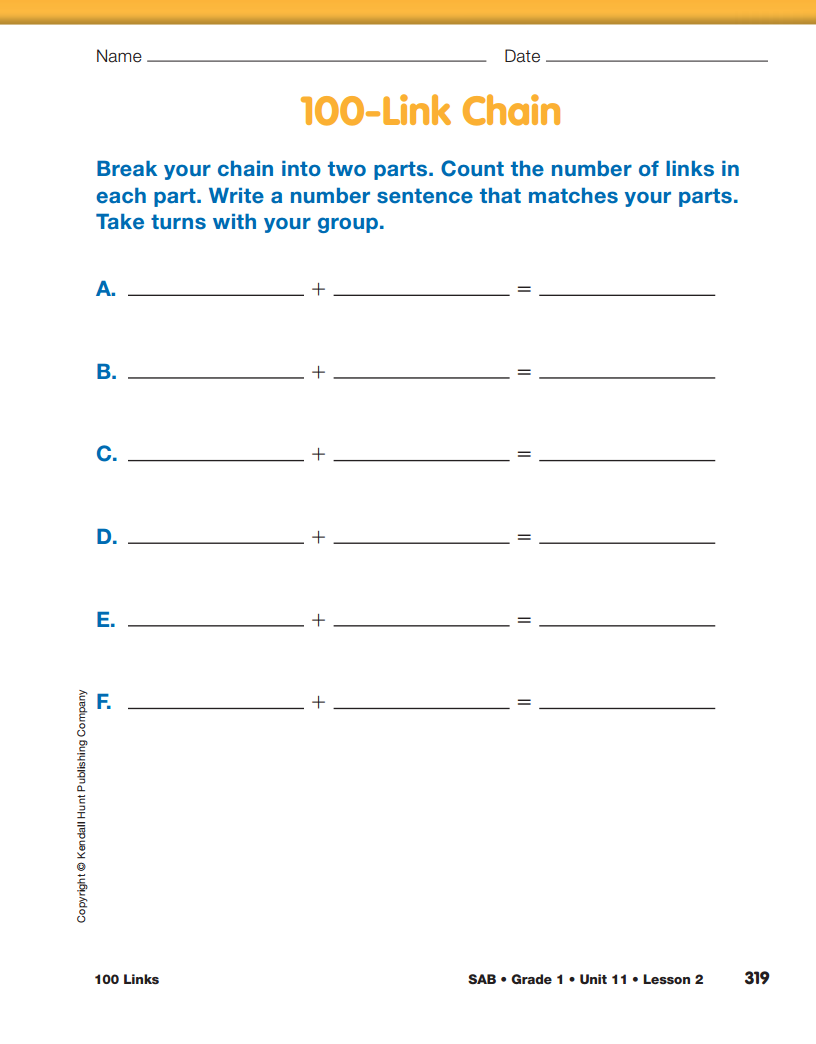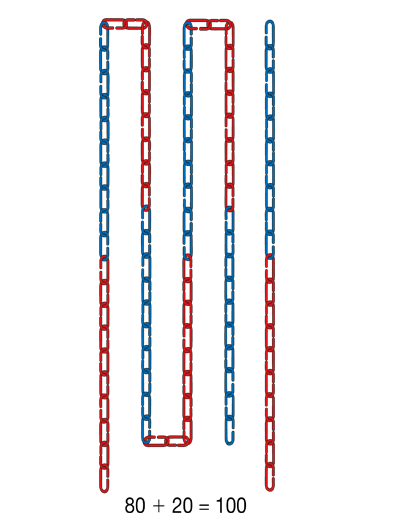100 Links
Est. Class Sessions: 1Developing the Lesson
Make a 100-Link Chain. Assign students to groups of four. Distribute two different-colored sets of 50 links to each group. Have groups sort the links into groups of 10 of the same color and then make a chain of 100 links by alternating colors every 10 links. See Figure 1.
As student groups begin to complete their chains, encourage them to think about how they can check the lengths of their chains by asking questions similar to the following:
If students do not suggest that they compare chains with another group, ask:
Have groups compare chains with one another to ensure that all chains have 100 links.
Compare 100-Link Chain to 100 Chart. In a whole-class discussion, relate the 10 rows on the 100 Chart to the 10 groups of ten in their 100-link chains.
Display and refer students to the 100 Chart from the Student Activity Book Reference section.
Ask:
Partition 100 into Two Parts. Direct students' attention to the 100-Link Chain page in the Student Activity Book. Ask each group to break their chain into two parts but only where one color stops and the new color starts (they cannot break the chain within a group of ten). Tell students that the two parts do not have to be equal. See Figure 2. Ask groups to count the number of links in each part and write a corresponding number sentence on the 100-Link Chain page in the Student Activity Book.
Students in each group can take turns breaking the chain into two parts and then work together as a group to write a corresponding number sentence. In that way, each group will complete four number sentences. As groups work, check to see that they are dividing the chains into two parts where the colors change and that they put their chains back together again before another student breaks the chain. Tell students that if one student breaks the chain in the same place as another student, they should put the chain back together and break it at another spot.
Share Strategies for Adding Tens. Talk with groups about their strategies for completing the number sentences. Encourage students to skip count by tens to determine the number of links in each part. They can also make connections between the addition facts for ten and multiples of ten to complete the sentences. For example, 8 + 2 = 10, so 8 tens plus 2 tens is 100 tens or 80 + 20 = 100. Calculators can be used to check their number sentences. See the Sample Dialog.



















